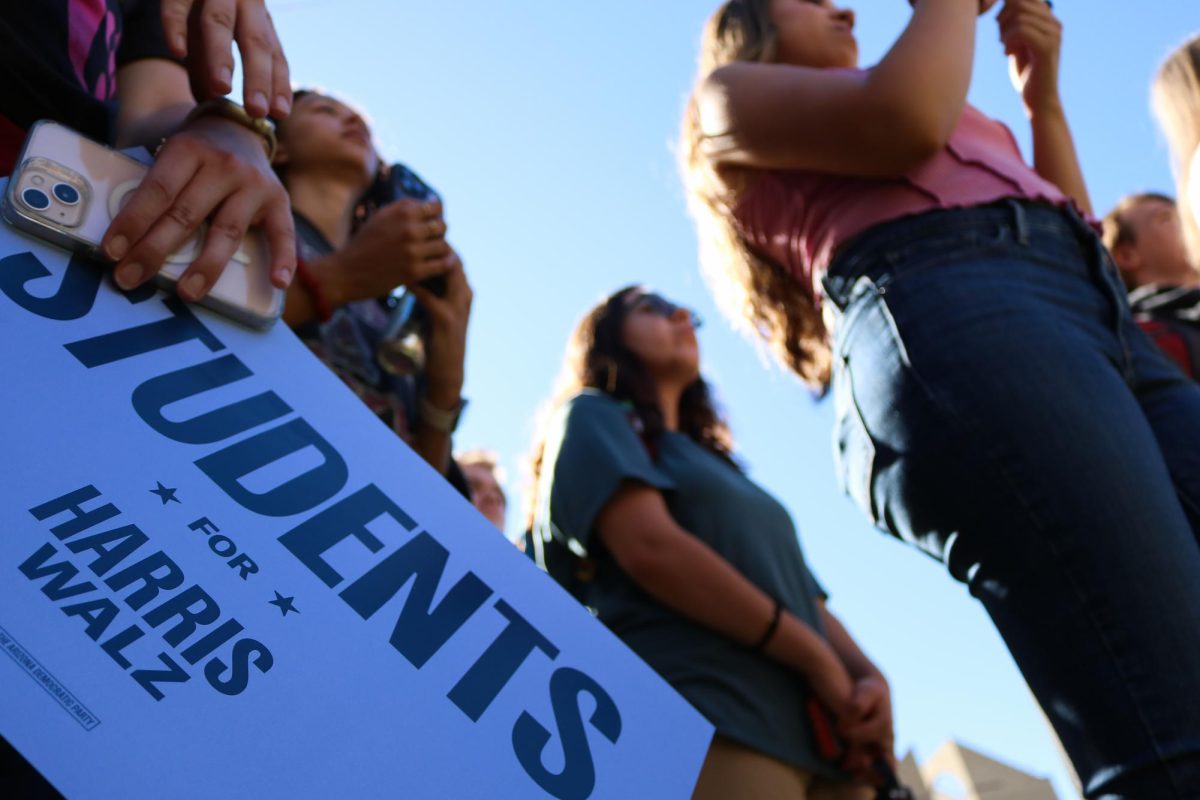A Goldwater Institute report that has ruffled the feathers of UA bigwigs has it that administrative “”bloat”” is a major factor contributing to the rising cost of higher education in the United States.
The report, “”Administrative Bloat at American Universities: The Real Reason for High Costs in Higher Education,”” found that both the number of administrative positions and administrative costs increased in universities across the nation between 1993 and 2007, by 39 percent and 61 percent, respectively. Those numbers exceed the increases in student enrollment — 18 percent — and student spending — 39 percent.
According to the report, these discrepancies mean that higher education became less efficient between 1993 and 2007, spending money on superfluous administrative positions rather than instruction and other student services.
The Goldwater Institute ultimately determined that the culprit behind the rising cost of higher education is state subsidies. The report’s executive summary states, “”The large and increasing rate of government subsidy for higher education facilitates administrative bloat by insulating students from the costs. Reducing government subsidies would do much to make universities more efficient.””
However, the report’s conclusions seem to have come before its writers went over their data carefully. Private institutions, which by and large do not receive state subsidies, suffer from the same so-called bloat, according to the report’s data.
The number of administrators in private universities increased by 40 percent between 1993 and 2007, from 11.3 to 15.8 full-time administrators per 100 students. In public universities, the increase was 39 percent, from 5.7 to 7.9 full-time administrators per 100 students.
Not only was the public universities’ rate of increase lower, public universities have fewer administrators overall than private. This fact contradicts the Goldwater Institute’s assertion that state subsidies make universities less efficient. Based on the report’s definition of efficiency, in fact, private universities lag behind public ones. The report totally ignores the proverbial big pink elephant in its data — private schools, which rely almost solely on student tuition and endowments, not state subsidies, are just as “”inefficient,”” if not more so, than public schools.
Both ASU and the UA released statements pointing out other major discrepancies in the way the Goldwater Institute interpreted the data for its report. President Robert Shelton told the Daily Wildcat he thought the Goldwater Institute unfairly manipulated the data. “”They put numerous categories of employees at the UA into the ‘administrator’ classification that simply are not administrative positions,”” he said. ASU released a statement airing similar grievances with the report.
Do flaws in the Goldwater Institute’s methodology mean its conclusions are incorrect? Perhaps not. Administrative bloat is a constant concern for universities, which must balance the need to efficiently provide students with high-quality instruction with the vast administrative demands of a sizeable institution.
However, the various problems with the Goldwater Institute’s methodology and the sizeable gap between the data and conclusions rob the report of its credibility. Further tarnishing that credibility, Goldwater Institute Vice President for Research Matt Ladner was downright flippant in addressing the possible discrepancies in the report. He told the Daily Wildcat, “”The report is just fine as it is. … There’s nothing I would change.””
The institute, rather than contribute to the important discussion of making higher education effective and affordable, has shown itself with this report to be not much more than a conservative propaganda machine, churning out conclusions that favor free-market solutions without the data to support those conclusions.
It’s a shame for higher education across Arizona and the nation when research that should help them improve instead regurgitates tired partisan points of view. In order to truly improve America’s universities, the research done to that end must be non-partisan, free of special interests and follow research methods that are fair and unbiased.
Just as young people deserve quality, affordable higher education, universities deserve fair, balanced research on how to accomplish that.
— Editorials are determined by the Daily Wildcat opinions board and written by one of its members.








